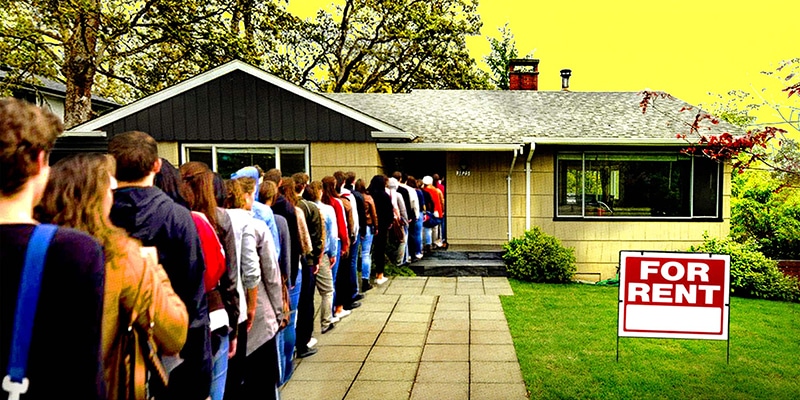NSW’s rental crisis continues as vacancies remain at historic lows

Despite signs of relief in vacancy rates in certain parts of Sydney, the state’s peak real estate body says the rental market isn’t yet out of the woods.
According to the REINSW Vacancy Rate Survey, the region’s available rental accommodation increased by 0.3 percent to 1.7% over June.
Although the rental market got some breathing room during the month, Tim McKibbin, CEO of REINSW, warned that its woes are far from over.
The availability of rental accommodation remains at historic lows and the rental crisis remains entrenched, despite the increase in vacancies.
Both the middle and outer rings of the harbour city experienced an increase in residential vacancy rates in June, reaching 1.5 percent compared to 0.7 percent and 1.2 percent in May.
Within the city’s inner ring, vacancy rates remained unchanged at 2.1%, contributing to the increase last month.
The number of available residential rentals declined in both the Hunter and Illawarra regions outside of Sydney.
There was a 0.3% drop in vacancy rates in the Hunter region and a 0.5% drop in the Illawarra region, according to McKibbin.
Some regional vacancy rates tightened further during the month, but others eased.
A rise in vacancy rates was recorded on the Central Coast (1.7 percent to 2.3 percent), on the Mid-North Coast (1.1 percent to 2.1 percent), in the Northern Rivers (1.4 percent to 3.3 percent), on the Orana (1.5 percent to 3.6 percent), on the South Coast (2.2 percent to 2.5 percent), Riverina (1.1% to 1.3%), and in the South Eastern region (1.5% to 2.6%).
At the same time, vacancy rates tightened in Albury (1.5% to 1.4%), Coffs Harbour (from 2.6% to 2.4%), Murrumbidgee (1.5% to 1.6%), and New England (2.2% to 2%).
According to Mr McKibbin, the rental market in the state is “extremely tough.”
There are many pre-qualified tenants in some areas, but there isn’t enough inventory available to meet demand, he said.
Although there are areas with available properties, rising rents and other costs of living pressures mean tenants can’t afford to move.
Despite the monthly vacancy rate easing, the demand for rental accommodation isn’t slowing down, he said.
There are three things that remain constant in the residential rental market: availability of stock is low, weekly rents are rising, and tenants are facing ever-increasing living expenses.
“None of these things are improving – in fact, many are getting worse,” he concluded.







